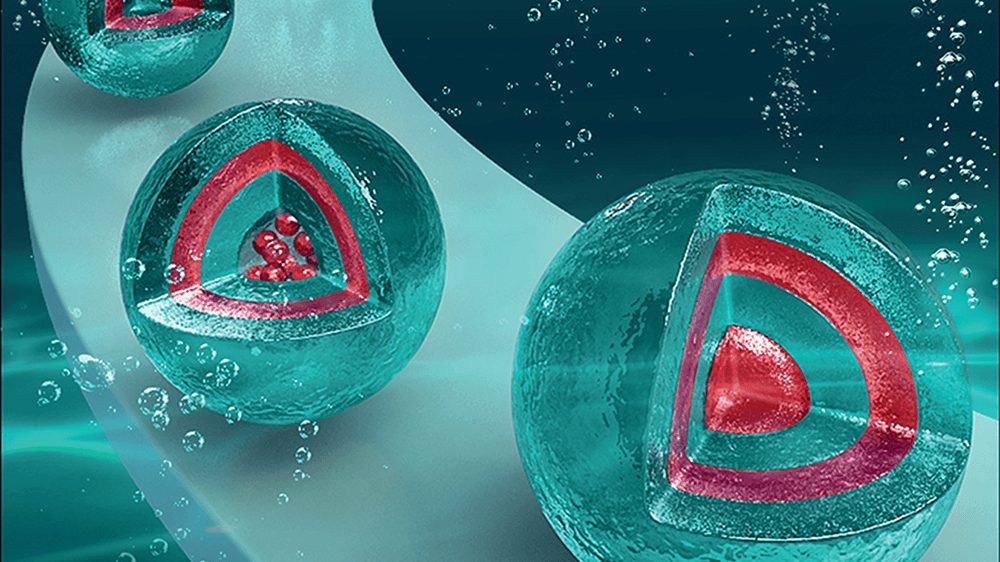Multiphase emulsions can encapsulate active ingredients, such as biomolecules, and release them over time, making them useful for pharmaceutical applications. Typically, these emulsions consist of organic solvents, limiting their utility and biocompatibility.
In their article in Small, Prof. Anderson Ho Cheung Shum from The University of Hong Kong and co-workers report a method to prepare multiphase, all-aqueous emulsions.
A ternary aqueous mixture and polyethylene glycol are injected into a microfluidic glass capillary device. The droplets separate by osmosis into alternating layers of salt-rich and polymer-rich phases, sequentially generating double, triple, and eventually quadruple emulsion droplets.
The phase separation time increases with the number of layers, with the fourth layer forming at around 100 seconds. At a low osmolality, the droplet dissolves, while a high osmolality retains a single-phase drop. The concentration of the solutes also affects the phase separation and influences the number of layers formed.
To find out more about this method for generating multilayer aqueous emulsions, please visit the Small homepage.

















